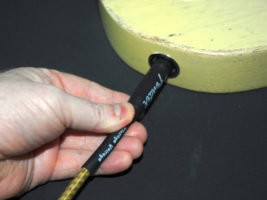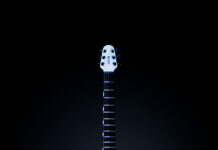
What To Do When Your Guitar Goes Dead
It’s one of the most traumatic moments in a guitarist’s life. You’re at a rehearsal or playing a show. You sound great. Never better, actually. You get ready to take a solo, you step forward, put on your best sex face and … nothing. Your guitar has gone dead. At that moment, you just want someone to give you a big hug and tell you everything is going to be alright.
It’s one of the most traumatic moments in a guitarist’s life. You’re at a rehearsal or playing a show. You sound great. Never better, actually.
You get ready to take a solo, you step forward, put on your best sex face and … nothing. Your guitar has gone dead.
At that moment, you just want someone to give you a big hug and tell you everything is going to be alright. It is, actually; once you figure out what the problem is. You could just take all your gear down to your local guitar emporium, throw it over the counter and say, “Fix that.” That’s the coward’s way out and certainly not how we do business here in the Shed.
Bottom line: You’re going to sniff out the cause of the problem, then sort it yourself. So dry your eyes and grab a screwdriver.
Actually, before you start cursing your beloved six-string, who says it’s your guitar that’s faulty, huh? Always make sure your amplifier and cables are working properly before you start messing around with your guitar. You should always own a spare cable or three anyway, just in case.
Don’t forget to check your entire signal chain. That includes your stompboxes. Plug your guitar direct to the amp. If it works, you might have a faulty pedal (or a dead battery) or patch lead. Check all that and move on.
First questions: Is it a simple fault? Well, yes, maybe. Maybe not. Can I fix it myself? Almost certainly … if you follow these instructions. Unless you’re particularly prone to bad luck, your guitar probably has A) a faulty jack socket; or B) a faulty switch. Now that we know that your cables, amp and pedals are OK, stick your cable’s jack plug into the hole for which is was intended in the guitar; or the jack socket as we in the business like to call it.
The other end should be connected to your guitar amp. The amp should be switched on. Wiggle the jack plug (See photo 1 in the gallery below). If the guitar splutters into life, even for a few seconds, you have a defective socket. If it doesn’t, you also have a defective jack socket. How’s that for easy diagnosis? If the jack plug is loose and perhaps even drops out of the guitar when you don’t want it to, you have a defective jack socket. There’s a pattern emerging here.
It’s time to have a closer look at the jack socket. On some guitars, the socket is secured to a square or oval plastic or metal plate. Simply unscrew the plate. On our Fender Esquire, the socket has to be removed via the control cavity. Eyeball the socket. Look for any obvious faults like rusty contacts or a loose wire. Reattach any loose wires and carefully clean dirty contacts with a piece of light-grade sandpaper (See pic 2).
The cable’s jack plug should slip snugly in the guitar’s jack socket. If it’s loose, gently bend the metal tab (See pic 3). Check your progress by plugging in the cable until you get a tight fit.
If the socket looks OK and the guitar is still dead, quickly wiggle the pickup selector switch back and forth (See pic 4). If the guitar starts to work, even briefly, you’re dealing with a faulty or dirty switch. Gain access to your guitar’s innards. This might mean carefully removing your scratchplate or a backplate if your guitar has rear mounted controls. On our guitar we simply unscrew the control plate and turn it over. The genius of Leo Fender.
Look for any loose wires and bad connections and repair as necessary (see Pic 5). If your switch has exposed contacts, you can clean them with some light sandpaper. Be gentle: The contacts on guitar components can be fragile. If the switch still doesn’t work, replace it. Draw a diagram of the wiring before you remove the old switch. If your guitar has a budget enclosed switch, it’s not worth repairing. Get a better quality one.
Oh, and while you’re rummaging around the control cavity, squirt some contact cleaner into the pots (or potentiometers) as seen in pic 6. As you spray twist the control and again test the guitar with your screwdriver. That should get you back on the road. Next time, I’m going to talk you through the noble art of soldering. You’ve asked me about that a lot. See you then.

Source: www.guitarworld.com









